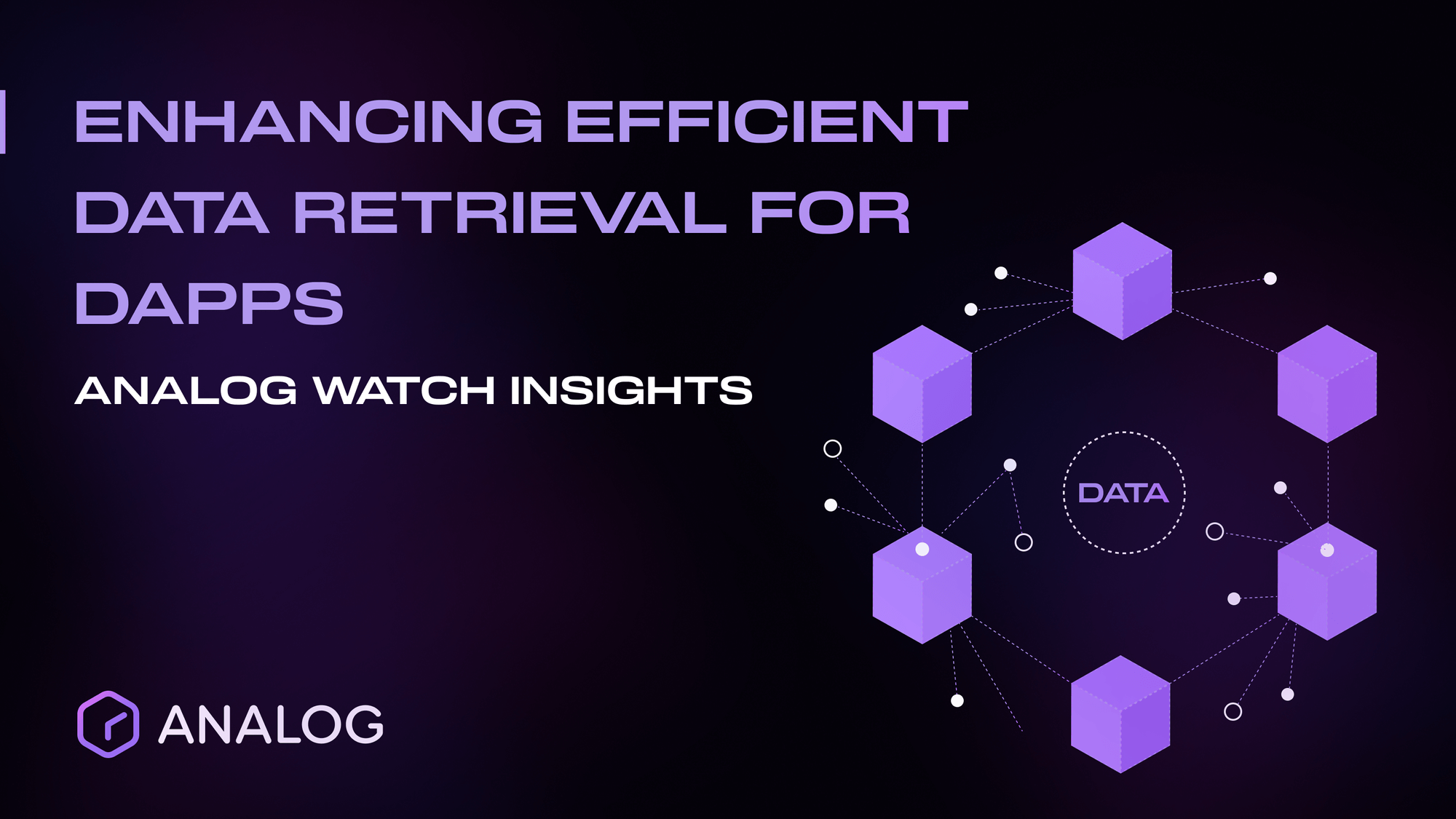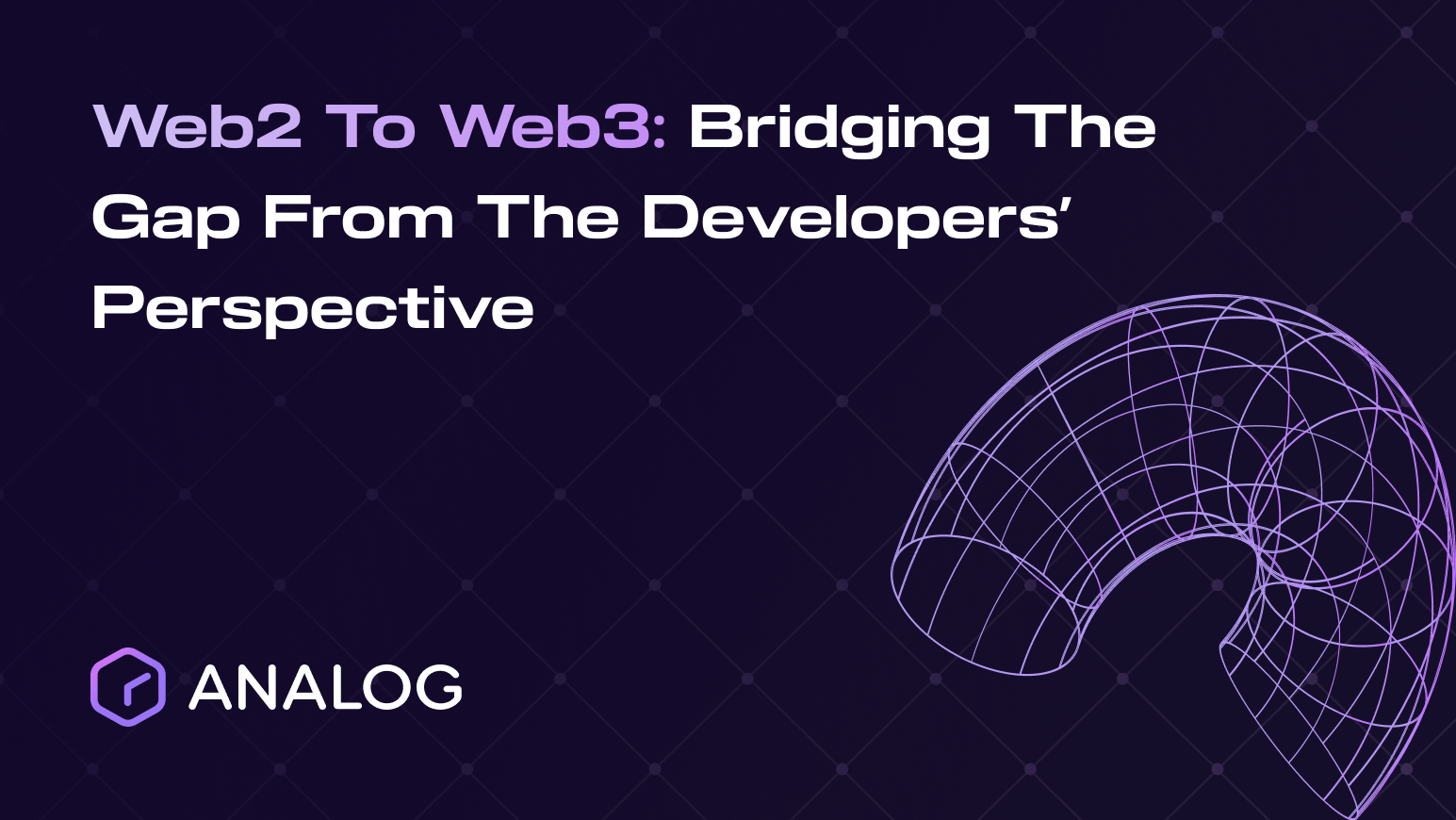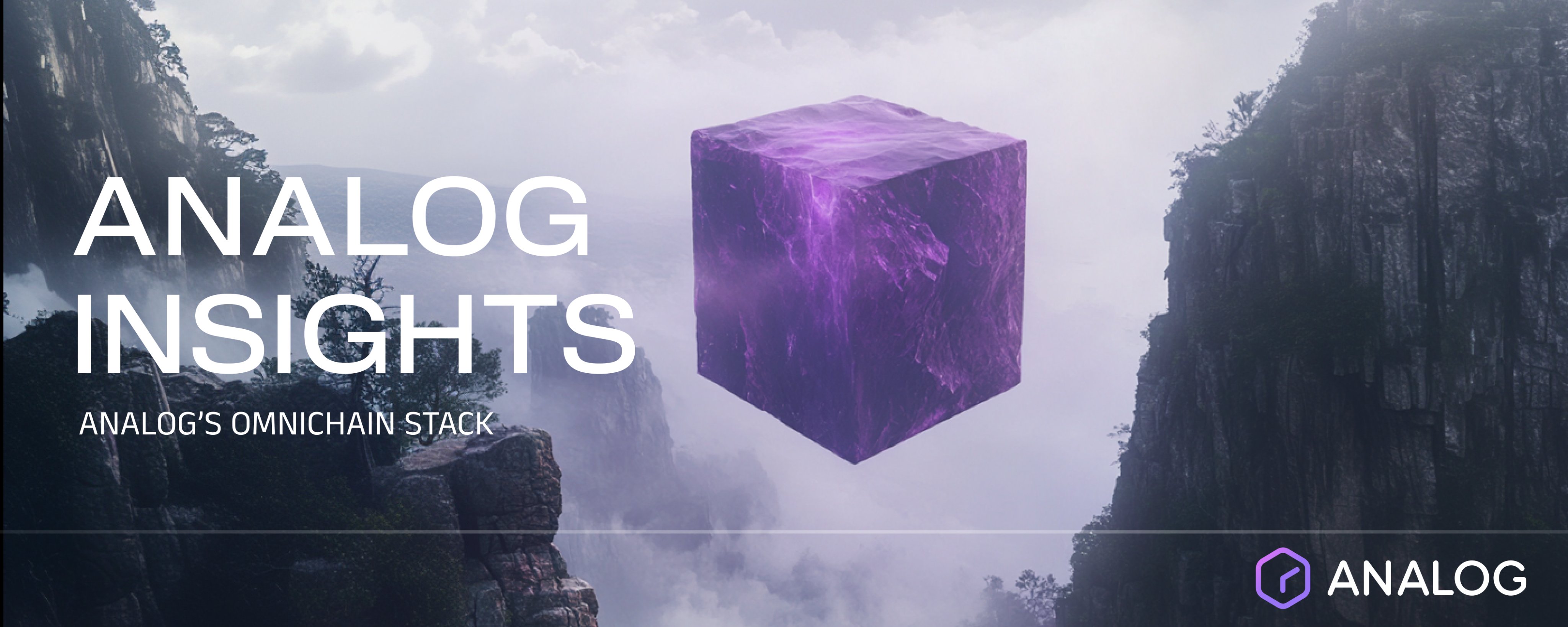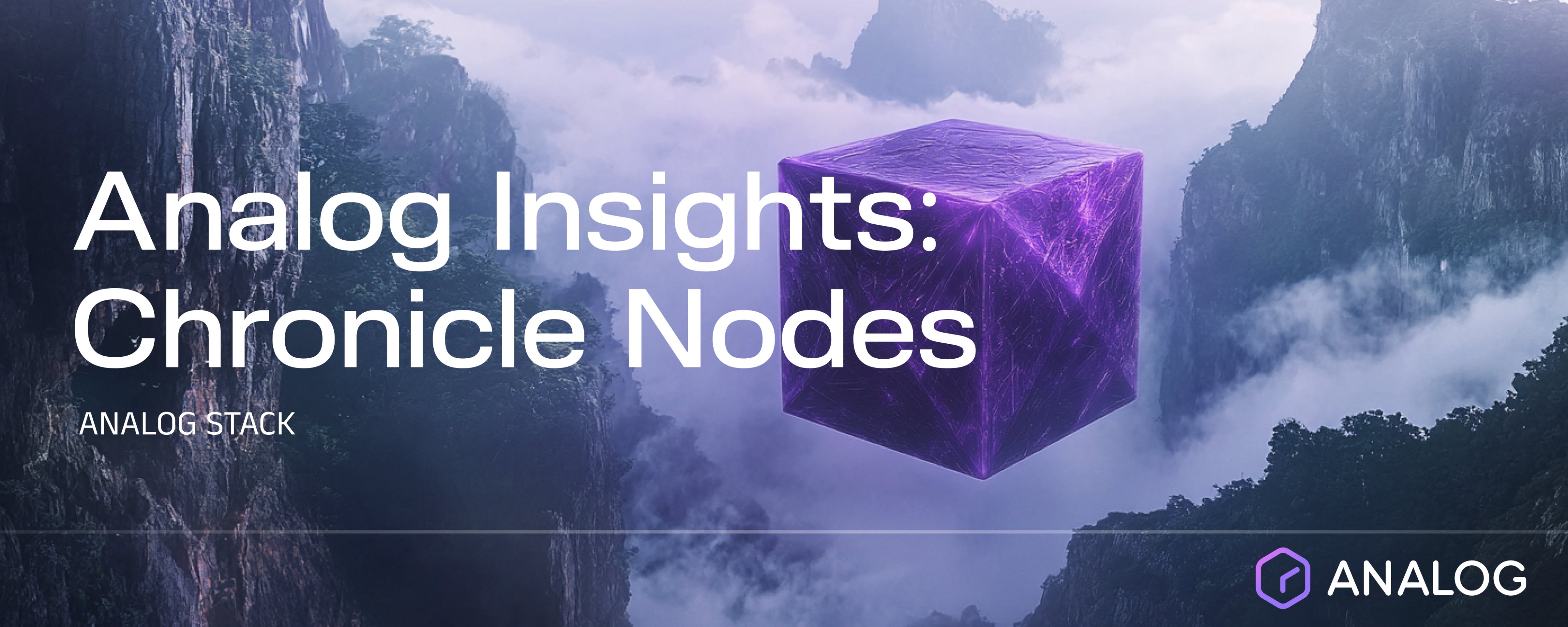
Enhancing Efficient Data Retrieval for DApps | Analog Watch Insights
Blockchains have radically redefined our interaction with the digital world. Decentralized applications (DApps) are proliferating, creating fresh opportunities and complexities for developers. In this post, we’ll delve into the challenges of accessing Web3 data and examine why Analog Watch stands out as an innovative service designed to cater to developers’ unique needs in DApp development.
Understanding Web3 data accessibility problem
Imagine you’re a developer building a DApp that requires real-time access to smart contract data and user interactions. Navigating this ocean is arduous, much like searching a vast library with millions of books but lacking a cataloging system.
Below are common challenges you’re likely to face when trying to access data from a blockchain:
Slow syncing speeds: Blockchain networks often emit vast amounts of data. Staying in sync with such data is crucial for DApps, particularly those that power Decentralized Finance (DeFi) markets. However, traditional querying methods such as JSON-RPC calls can prove sluggish and request-heavy, causing delays in both real-time and historical data.
Data fragmentation: Blockchain networks write data to their ledgers in a sequence, one block after another, as the chain is constructed. This often results in fragmented, unorganized, and underutilized data, making it hard for users to query efficiently.
Multi-chain indexing and aggregation: While the shift to a multi-chain future has created more possibilities for scalability and innovation, it has also created fragmented data for DApps that intend to go multi-chain. For example, Uniswap is currently deployed across over eight blockchains, including Ethereum, Celo, Avalanche, Optimism, and Arbitrum. This deployment strategy can quickly lead to developing and maintaining multiple infrastructure components, increasing operational costs. Besides, you have to implement additional logic on the client side (e.g., SUM, AVG, PROD, multi-chain, etc.) for advanced DApps that require aggregation across multiple chains.
Lack of standardization mechanisms: Unlike traditional database management systems that support query languages such as SQL, blockchain networks are designed to be sovereign, with varying data structures, APIs, and no standardized query language. This makes it hard for blockchain indexers and users to query the required smart contract data.
Existing approaches for indexing Web3 data
A Web3 indexer is a specialized service that plays an essential role in DApp development by simplifying the application’s access to blockchain data. It fetches data stored on blockchain networks and organizes it into a relational database, making it more accessible for developers and other users to efficiently query and use.
To use a Web3 indexer, all you need to do is define the data types and relationships in the smart contract(s) you would like to query and how such data should be stored in the database. The indexing service can then provide a standard REST API or custom GraphQL endpoint for users to leverage when querying the smart contract data.
There are three common approaches you can use to index blockchain data:
Dedicated node: You can run your own node as local, co-located, or use a cloud service provider.
RPC node provider: You can use an RPC provider as a public or private node.
Back-end as a service (BaaS): You can leverage a BaaS provider with custom specifications to query blockchain data.
The table below provides a summary of the pros and cons of each method:
| Approach | Overview | Pros | Cons |
|---|
| Dedicated Node | In this approach, you host the node for yourself and then query that node directly via a client. This method uses the JSON-RPC specification to provide a standard set of methods for querying blockchain data. | Running a dedicated node can allow you to:
-Create personal node configurations.
-Achieve Enhanced security.
-Achieve system-level optimizations | -Running a dedicated node requires dedicated hardware (e.g., CPU, RAM, storage, etc.) that can be costly to set up.
-It can involve lots of technical issues, that could be time-consuming and tedious.
-It may involve high maintenance costs. |
| RPC Node | In this method, you choose an RPC provider to handle all the aspects related to infrastructure setup, management, and node maintenance. The node provider then exposes an endpoint that you can use to query the data. There are two main categories of endpoints: public, which are free and rate-limited and private that can guarantee speed and reliability. | -RPC nodes, especially the ones that provide private endpoints, can allow you to scale the network in a reliable manner.
-Using an RPC provider frees you from all the aspects related to node setup and maintenance. | -Most RPC providers are largely centralized entities, which means they do not align with the blockchain ethos and have a single point of failure challenges.
-RPC nodes lack the ability to filter and aggregate data from multiple smart contracts. |
| BaaS | You can develop your own back-end solution or use a third party solution that abstracts all the aspects to do with querying blockchain data. For example, when using an RPC provider, you have to communicate directly with the node via an endpoint to query data. However, for most BaaS platforms, this step is not necessary. | -BaaS solutions are customizable. A BaaS solution can provide more customizability based on your DApp's unique needs, such as the need to aggregate data from multiple smart contracts or protocols that require custom event handling.
-Decentralization: BaaS solutions can be made to align with the blockchain ethos of decentralization by allowing indexers and other parties to participate in the indexing framework. | -Some RPC providers are largely centralized entities, which means they do not align with the blockchain ethos and have a single point of failure challenges. |
Exploring Analog Watch for your Web3 data needs
Analog Watch is a low-code, developer-friendly, and multi-chain indexing platform. It is fully customizable and streamlines the process of retrieving data from any supported network, providing developers with a seamless way to access fragmented data across multiple blockchains.
Here are some notable features that make Analog Watch the “go-to” solution for Web3 data retrieval:
Low-code capabilities: Analog Watch provides automatic code generation via a View Builder, minimizing the complexities of interacting with smart contracts. You can leverage the View Builder to generate Views quickly, saving the time required to deploy and query data from a listed smart contract.
Prioritized UX/DevEx: A seamless UX is necessary for onboarding users into the Web3 ecosystem. Analog Watch UI is a hosted service that plays a crucial role by allowing users — regardless of their technical expertise — to publish and explore smart contracts and Views. Developers can also leverage the Watch SDK’s Quickstart Guide to help them onboard to the platform and start deploying Views.
Multi-chain indexing and data aggregation: Analog Watch natively supports multi-chain indexing and data aggregation into a unified relational database. This feature lets you query a single endpoint when fetching data from multiple smart contracts on supported chains. Check out “Aggregated Price Feeds” to learn more.
GraphQL API support: Analog Watch UI and the Watch SDK provide an intuitive and ready-to-use GraphQL endpoint, making it easier for users to query published Views.
How to deploy Views and query data with Analog Watch
Now that you’ve understood why Analog Watch is an efficient Web3 indexing platform, what next? It’s time to take a deep dive into the steps you need to follow to build Views and query data with Analog Watch. There are two ways to interact with Analog Watch:
Analog Watch UI: This is a hosted service that leverages drag-and-drop interfaces to allow developers to deploy and explore smart contracts/Views. Currently, the Analog Watch UI doesn’t permit direct querying of data from the GraphQL endpoint. As such, we’ll not cover the details of using Analog Watch UI in this post. However, you can check out “Watch UI (View Builder)” to learn more about deploying and exploring Views with Analog Watch UI.
Watch SDK: This is a JavaScript SDK that serves as a Client by abstracting all the details about authentication, deployment, and querying Views. Analog Watch also uses the watch command-line interface (CLI)—a lightweight wrapper around the Watch SDK—to generate the session keys and scaffold smart contracts and Views from templates. See “Watch CLI” for more details.
How to deploy and query Views with the Watch SDK
Here are steps you can follow to deploy and query Views with the Watch SDK:
Step 1: Install the Watch SDK
The Watch SDK lets you generate session keys and interact with Analog Watch. You can install it in two ways depending on the choice of your package manager as follows:
or
Step 2: Generate the session keys
The Watch SDK supports two environments: the web environment, which requires @polkadot/extension-dapp, and the node environment, which requires the @polkadot/Keyring (<https://polkadot.js.org/docs/api/start/keyring/>) package.
To use the web environment, type the following commands:
For the node environment, type the following commands:
Step 3: Initialize the Client
Initialize and configure the Client as follows:
Step 4: Deploy the View
Use the generated session keys to create and deploy Views that interact with listed smart contracts on the Analog Watch. Check out “Publish Views with Watch SDK” to learn more.
Step 5: Query Views
With your Views published, you can now begin querying the smart contract data using a unified GraphQL endpoint. Visit https://docs.analog.one/documentation/developer-guide/query-data/watch-sdk to learn more about querying Views.
Step 6: Build your DApp
Once you have access to smart contract data, you can now start building applications, services, or analytics customized to your business requirements. Check out https://www.analog.one/?section=usecases to learn more about what you can build with Analog Watch.
Conclusion
Retrieving data from blockchains is complex and challenging. However, with Analog Watch, you can effortlessly overcome these challenges. Analog Watch’s low-code capabilities, prioritized UX/DevEx, multi-chain indexing, and GraphQL integration make it a powerful tool for efficiently deploying and querying data from supported chains.










